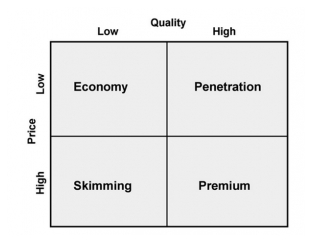
Hilton’s 7Ps of marketing comprises elements of Hilton Hotels marketing mix that consists of product, place, price, promotion, process, people and physical evidence. Product Element of Hilton Hotels Marketing Mix Hilton Hotels and Resorts can be classified as a full service hotel. Accordingly, the range of its services is extensive and includes meeting, wedding and banquet facilities and special event services, restaurants and lounges, food and beverage services, swimming pools, gift shops, retail facilities and other services. Generally, products are divided into three levels: core, facilitating and supporting products. Core products can be explained as a basic form of a product. To put it simply, core products are the main reasons for customers purchasing from a business. For Hilton Hotels & Resorts core product is hotel rooms that customers stay in for a specific period of time. Peripheral services can be explained as additional products and services above the core product that businesses offer to get competitive edge in the marketplace. Facilitating products involve services that assist consumers in consumption of core products. Hilton offers a set of popular facilitating products such as customer services, bars and restaurants, and online reservation facilities. Supporting products include additional products and services that are offered in order to obtain competitive advantage for the business by increasing the value of core products and services. A range of supporting products offered by Hilton Hotels include 24/7 room service, free newspapers and magazines for business travellers, concierge services etc. Augmented product is benefit offer made by businesses that consist of core product and peripheral services. Augmented products offered by Hilton Hotels & Resorts include membership discounts, luxurious room and exterior designs, high class restaurants and relaxed hotel atmosphere. Place Element of Hilton Hotels Marketing Mix The ultimate aim of the distribution strategy for a hotel firm can be specified as making available…
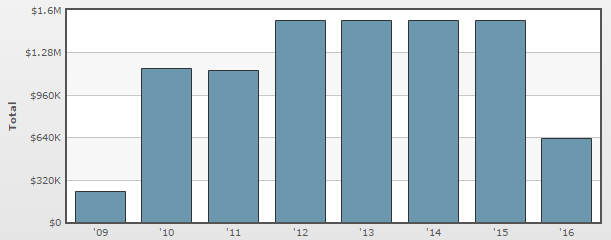
PESTEL is a strategic analytical tool that stands for political, economic, social, technological, environmental and legal factors. Hilton Hotels PESTEL analysis involves the analysis of potential effect of these factors on Hilton’s revenues and its long-term growth prospects. The following is a brief Hilton PESTEL analysis for the UK market in particular. Political Factors Political stability is a basic requirement to success regardless of the industry. In hotel industry in particular, political factors can influence the number visitors, both, tourists and business travellers’ visits to a country in direct and indirect ways. For example, an ongoing delicate political situation Northern Ireland may discourage potential visitors to the region due to safety concerns. Moreover, following acts of terrorism in London on July 7, 2005, UK was temporarily branded as a place that accommodated a set of extremist religious organizations. Risks or threats of acts of terrorism are most likely to reduce the numbers of visitors to London and UK with negative impacts on Hilton performance in this particular market. Hilton Worldwide actively engages in lobbying in order to be able to influence certain political factors upon the business to a certain extent. As it is illustrated in the figure below, the company has been spending more than USD 1.5 million during the past four years for lobbying purposes. Annual lobbying budget of Hilton Worldwide[1] Economic Factors National and international macroeconomic situation and factors and events impacting the situation are major factors affecting Hilton Hotels & Resorts business. For example, during the Olympic times in the UK in 2012 most of the hotels were occupied and booked fully for the whole period. However, the situation was completely different once the Olympic Games were over. Moreover, as a direct result of the global economic and financial crisis of 2007 – 2009, same hotel sales…
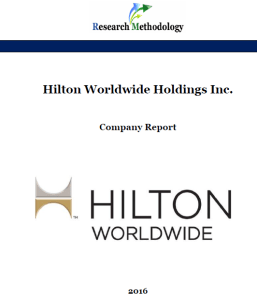
Hilton Hotels is a global flagship brand of Hilton Worldwide Holdings Inc.and it has 572 hotels and resorts in 85 countries and territories across six continents. Hilton Worldwide is the largest hotel company and the fastest growing hotel company in the world. Along with Hilton Hotels, a vast yet focused portfolio of Hilton Worldwide 13 brands in the premium hotels and resorts sector such as Waldorf Astoria, Conrad, Canopy, Curio, Double Tree, Embassy Suites and Hampton. Incorporated in 1919 by Conrad Hilton, currently, Hilton Worldwide owner base comprises 10,000 owners, of which 76% are repeat owners. The company has achieved Adj. ABITDA increase of 13 per cent in 2015 compared to the previous year. Importantly, the company converted 14,000 rooms from competitors’ brands and independent hotels during the same period. In 2015, the company earned the total revenues of about USD 11.2 billion, an increase of about 7 per cent compared to the previous year. In January 2016 Hilton Worldwide launched its latest brand Tru by Hilton which is intended to target mid-scale customer segment. Hilton Worldwide mission statement is formulated in the following manner: “To be the most hospitable company in the world – by creating heartfelt experiences for Guests, meaningful opportunities for Team Members, high value for Owners and a positive impact in our Communities.” Hilton business strategy can be described as service differentiation with a focus on quality, maintaining the highest level of standards and integrating IT systems into various aspects of service provision. The most noteworthy weaknesses associated with Hilton Worldwide include debts of more than USD 10 billion, overdependence on the US market and the lack of flexibility of the business due to its large size. Hilton Worldwide Holdings Inc. Report contains the application of the major analytical strategic frameworks in business studies such as…
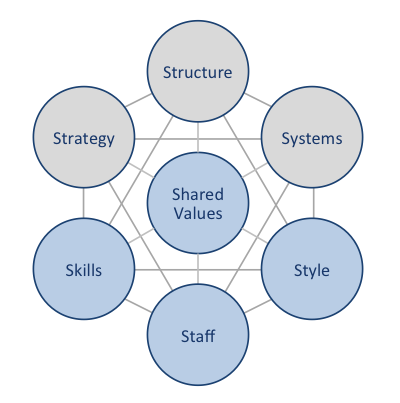
Red Bull McKinsey 7S framework explains how seven key elements of businesses can united to increase the overall effectiveness of the company. According to Red Bull McKinsey 7S framework strategy, structure and systems represent hard elements, whereas shared values, skills, style and staff are soft elements. As it is illustrated in figure below, shared values are positioned at the core of Red Bull McKinsey 7S framework, since shared values guide employee behaviour with implications in their performance. Red Bull McKinsey 7S Framework Hard Elements Strategy. Red Bull pursues the business strategy of product differentiation. The company differentiates its energy drinks according to the perception of ‘Red Bull gives you wings’. Specifically, according to the company’s marketing message, consumption of Red Bull energy drinks result in enhanced mental and physical performance. Benefiting from first mover advantage and an extensive reliance on marketing also represent important elements of Red Bull business strategy. Structure. Red Bull organizational structure can be described as divisional and company runs two business divisions: Red Bull soft drinks and other businesses. Red Bull soft drinks division comprises Red Bull Energy drinks (regular, sugar free, zero calories and Red Bull editions) and Red Bull Simply Cola. Other business division, on the other hand, comprises motor racing, media, MVNO and fashion online retailing. Systems. Main systems that run Red Bull GmbH include information system, HR system, financial system, quality management system and others. The management attempts to achieve a close integration between individual systems within the organization in order to increase the overall effectiveness of the company… Red Bull GmbH Report contains a detailed discussion of Red Bull McKinsey 7S framework. The report also illustrates the application of the major analytical strategic frameworks in business studies such as SWOT, PESTEL, Porter’s Five Forces, Value Chain analysis and on Red Bull.…
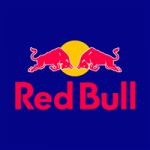
Red Bull 7Ps of marketing explains how the company deals with individual elements of the marketing mix – product, place, price, promotion, process, people and physical evidence, in order to make its products more attractive to the target customer segment. Product. Red Bull product portfolio is highly focused and is limited to the following: Red Bull Energy Drink Red Bull Sugar Free Red Bull Zero Calories Red Bull Editions: tropical, blue and orange editions Red Bull Simply Cola The company also sells brand-related accessories, apparel, media products, headwear and gift ideas from its official website. The company has a history of launching unsuccessful products on a few occasions. For example, Red Bull Cola introduced in 2008 and Red Bull energy shots introduced the 2009 struggled to excite consumers and retailers, thus had to be discontinued in 2011.[1] Place. Red Bull is sold in more than 169 countries.[2] Red Bull sells its beverages via distributors and resellers such as supermarket chains, bars and restaurants and other outlets. The company does not use online sales channels to sell its beverages. However, online sales channel is used to sell brand-related products, accessories and gift-ideas. Red Bull offers a free delivery and refund for up to 30 days for these products. Price. Red Bull pricing strategy can be classified as premium pricing. Red Bull beverages are the most expensive in the energy drink market, as the company charges additionally for the psychological consumer perception of ‘Red Bull Gives You Wings’. Various Red Bull resellers such as supermarket chains, bars and restaurants and other outlets also apply psychological pricing strategy with use of Price Point Perspective (PPP) 0.99 Cents. Moreover, Red Bull pricing strategy also integrates various patterns of promotional and geographical pricing strategies… Red Bull GmbH Report contains a detailed discussion of…
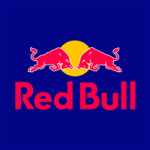
There is a very little information available about Red Bull CSR programs and initiatives. Unlike the major companies of a similar size, Red Bull does not produce an official CSR report. This is partially because the energy drinks manufacturer is a private company, not a corporation, hence there is no shareholder pressure to engage in CSR to a greater extent. Currently, the scope of Red Bull’s engagement in CSR is limited to the following points: In 2013, Red Bull launched its Amplifer scheme, designed to support music start ups Red Bull ECO-Coolers use up to 45% less energy than conventional refrigerators. 650,000 ECO-Coolers are installed up to date 80 per cent of energy in manufacturing processes are used from renewable sources Today Red Bull cans are about 60 per cent lighter than a few years ago Red Bull uses aluminium cans that are 100 per cent recyclable Wall-to-Wall production technique used by Red Bull saves 8,750,000 km of truck travel annually. This technique involves manufacturing and filling cans on the same site and saves more than 6,641 tons of CO2 emissions each year Red Bull Wings for Life campaign funds cutting-edge research projects towards spinal cord injury At the same time, it is hard to see any effort Red Bull is making on the following important aspects of CSR: Supporting local communities Educating and empowering workers Labour and human rights Employee health and safety Gender equality and minorities Responsible water consumption Sustainable sourcing Red Bull GmbH Report contains a criticism of Red Bull CSR programs and initiatives. The report also illustrates the application of the major analytical strategic frameworks in business studies such as SWOT, PESTEL, Porter’s Five Forces, Value Chain analysis and McKinsey 7S Model on Red Bull. Moreover, the report contains analysis of Red Bull’s marketing strategy along…
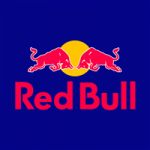
An effective utilization of marketing communication mix is one of the core sources of competitive advantage for Red Bull. According to its marketing message, ‘Red Bull gives you wings’, the company has succeeded in associating the consumption of Red Bull with an enhanced mental and physical performance and leading an active and adventurous life. Red Bull marketing communication mix integrates the following: Red Bull TV online channel addresses the interests of the target customer segment promoting the brand at the same time The Red Bulleting online magazine covers the topic of sports, culture and lifestyle indirectly promoting the brand to the target customer segment Red Bull owns a set of sports teams such as RB Leipzig,FC Red Bull Salzburg, Red Bull Brasil, New York Red Bulls, Red Bull Racing, Scuderia Toro Rosso Red Bull employs about 150 people for content marketing and media strategy[1] Advertising Print and media advertising is one of the main tools within Red Bull marketing strategy. Red Bull Media House integrates fully dedicated print, TV and digital media platforms. Along with communicating Red Bull marketing message to the target customer segment, the media house offers advertising opportunities on B2B basis, thus creating an additional source of revenues for Red Bull BmbH. Print TV Online Bergwelten The Red Bulletin Servus in Stadt & Land Terra Master Magazin Seitenblicke Servus TV ServusTV.com Red Bull Media House media platforms Beyond Red Bull Media House platforms, the company also places print and media advertisements into newspapers, magazines and TV channels popular with the target customer segment. Advertising via billboards in major cities and selected locations also plays an important role in Red Bull marketing strategy. Sales Promotion The following forms of sales promotions techniques are used by Red Bull vendors such as grocery stores, supermarket chains, bars and restaurants and retail other outlets: 1.…
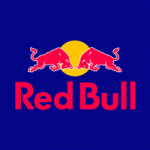
Red Bull segmentation, targeting and positioning explains which specific group of the population the company targets in order to sell their energy drinks to, by dividing the population into various segments. Segmentation involves dividing population into groups according to certain characteristics, whereas targeting implies choosing specific groups identified as a result of segmentation to sell products. Positioning refers to the selection of the marketing mix the most suitable for the target customer segment. Red Bull uses mono-segment type of positioning and accordingly, the company appeals to the wants and needs of a single customer segment. Red Bull target customer segment represent busy individuals who are overly active in their personal and professional lives and who have are fascinated by extreme sports. The following table illustrates Red Bull segmentation, targeting and positioning: Type of seg-mentation Segmentation criteria Red Bull target customer segment Red Bull Energy Drink Red Bull Sugarfree Red Bull Zero Calories Red Bull Editions: cranberry, lime, blueberry, tropical fruits Red Bull Simply Cola Geographic Region Domestic & international Domestic & international Domestic & international Domestic & international Den- sity Urban/rural Urban/rural Urban/rural Urban/rural Demographic Age 16 – 30 26 – 45 18 – 36 16 – 40 Gender Males & Females Males & Females Males & Females Males & Females Life-cycle stage Bachelor Stage young, single people not living at home Newly Married Couples young, no children Bachelor Stage young, single people not living at home Newly Married Couples young, no children Income High High High High Occu-pation Students, employees, professionals employees, professionals Students, employees, professionals Students, employees, professionals Behavioral Degree of loyalty ‘Hard core loyals’ ‘Hard core loyals’ ‘Soft core loyals’ ‘Switchers’ Bene-fits sought Enhanced performance Sense of belonging Enhanced performance Sense of belonging Enhanced performance Sense of belonging Sense of belonging Personality Ambitious Ambitious…
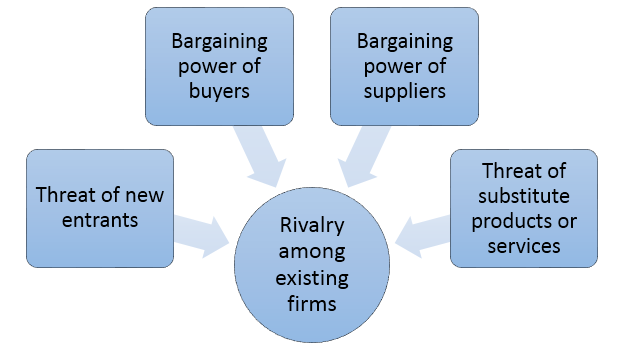
Red Bull Porter’s Five Forces identifies and analyses five separate forces that determine the overall pattern of competition in the energy drinks sector. These forces are represented in Figure 1 below: Figure 1 Red Bull Porter’s Five Forces Threat of substitute products or services is immense. Coffee is an obvious and cheaper substitute for energy drinks. Carbonated soft drinks, tea, water and juices represent additional substitute products. It is important to stress that buyer’s propensity to choose certain substitute products such as tea, water and juices may increase in the foreseeable future due to due to their increasing health-considerations fuelled by the media. There are no switching costs for customers to consume substitute products instead of energy drinks and this fact further increases the threat of substitute products. Indirect substitutions for energy drinks include getting enough sleep and leading a balanced life and this comes free of charge for the majority of customers. Rivalry among existing firms in energy drink industry is very intense. There are many energy drink brands and the rate of the growth of the industry is impressive. It has to be noted that diversity of competitors is not significant and brand equity plays a major role on the level of popularity of a specific energy drinks manufacturer. Major market players in energy drinks sector include Red Bull, Monster, NOS, Rockstar, 5-hour energy, AMP, Redline, Lucozade and others. As it is illustrated in Figure 2 below, although Red Bull is a clear market leader in energy drink segment in the US, its share in the global soft drinks and energy drinks sector is only 6.7 per cent (see Figure 3 below). Figure 2 Market share of soft drinks and energy drinks worldwide as of 2015[1] Figure 3 Energy drink market share in the US[2] Threat of new…
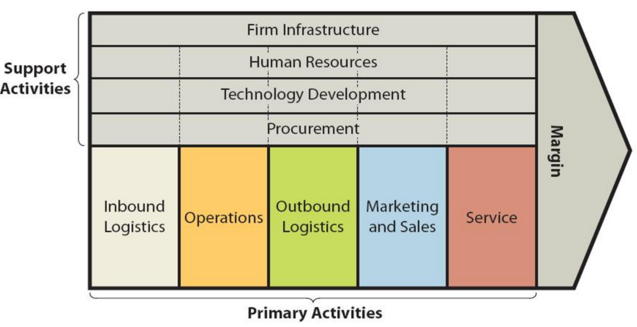
Red Bull value chain analysis is an analytical tool that can be applied to identify business activities that can create value and competitive advantage for the company. Figure below illustrates the essence of value chain analysis: Primary Activities Inbound logistics Operations With more than 5.9 billion cans sold in 2015 alone[1], the scope of Red Bull operations is extensive. The Red Bull flavouring is still produced in Bangkok and exported into manufacturing plants internationally. Wall-to-wall manufacturing technique is one of the main sources of value for Red Bull in operations primary activity. Wall-to-wall manufacturing technique involves manufacturing and filling cans on the same site and saving 8,750,000 km of truck travel annually, with highly positive implications from financial and environmental points of view.[2] Outbound logistics Red bull is sold in more than 169 countries[3] and its outbound logistics represents a complex system reflecting the size of the business. Red Bull Energy Drinks travel to their destination predominantly by train and ship. The company uses trucks only when it’s absolutely necessary. The use of train and ship is more cost-effective compared to trucks and this one of the important points in Red Bull value chain in outbound logistics. Red Bull cans are 40 per cent more space effective and 30 per cent more space effective compared to glass bottles and PET bottles containing the same quantity respectively[4]. Therefore, shape and light weight of Red Bull cans makes transportation much easier, an additional considerable source of value chain in outbound logistics operations. Marketing and sales. ‘Red Bull gives you wings’ represents an essence of Red Bull marketing communication message. This message is transmitted via a wide range of marketing communication channels on print TV and online platforms. Red Bull Media House five print magazines, one TV channel and an online TV…
